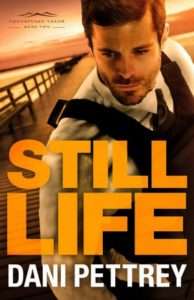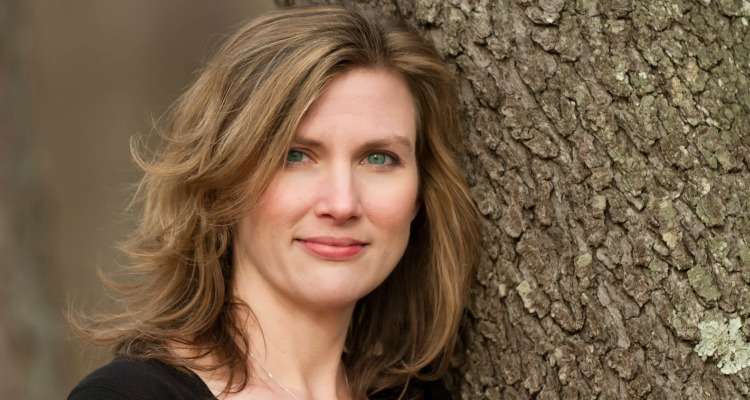Author Dani Pettrey reveals her secrets to writing pulse-pounding romantic suspense.
 I still feel like the new kid on the block, even though my eighth romantic suspense, Still Life (Bethany House Publishers), releases January 31st, but along the way, I’ve learned a thing or two about the art of writing suspense. My goal is always to write the stories God lays on my heart. I believe you have to be true to the voice God has given you and when you embrace that, your stories come out unique. That’s why there are so many great suspense authors out there. Because they have each honed their own voice.
I still feel like the new kid on the block, even though my eighth romantic suspense, Still Life (Bethany House Publishers), releases January 31st, but along the way, I’ve learned a thing or two about the art of writing suspense. My goal is always to write the stories God lays on my heart. I believe you have to be true to the voice God has given you and when you embrace that, your stories come out unique. That’s why there are so many great suspense authors out there. Because they have each honed their own voice.
An author’s process should also be unique. I begin with a “what if” premise. For example, in Cold Shot, the first book in my Chesapeake Valor series, the premise was “what if recent remains were found in a grave at Gettysburg?”
Once I have my premise, I start to think of which professions would be required to solve the particular premise I have chosen. Often, multiple career options come to mind, so I pick the two that interest me most. I love researching careers. I find it absolutely fascinating and often have to force myself to stop researching so the writing can begin. When choosing professions for your hero and heroine, they don’t necessarily have to both have “official” positions such as a federal agent or a police officer. One might be a crisis counselor, as Tanner Shaw is in my upcoming release, Still Life. Once I have settled on their careers, I determine how the two will fit together to solve the crime. I then pick my location, which is typically determined by the series’ region, such as Alaska or the Chesapeake Bay area.
I always pray before writing, as I hope all the stories God lays on my heart glorify Him. There’d be no point or fruit even attempting this without Him. At the start of each story, I grab a fresh notebook and gel pen, sit down and start writing longhand. Yes, longhand. Occasionally I can do scenes on the laptop, but my brain seems to work best the old-fashioned way.
I also don’t “plot” out my stories, but rather see them as movies playing through my mind. I love the thrill of the first draft as characters come to life and unexpected twists present themselves. I believe not planning everything out actually helps me, personally, to keep the story more suspenseful. If I don’t know where the story is going, how will the reader? We’re both along for the ride.
 Every genre has its own characteristics and nuances. Romantic suspense is no exception. In this genre you really want both aspects to play an equal role. You want the suspense to propel the romance forward and the romance to cause complications to the suspense. I keep this in the back of my mind as I write, but don’t intentionally force suspenseful situations. I let the story tell itself. I then, almost always, have to go back and really look at the pacing, the twists and the action to see if they are all maintained consistently throughout the book. I have a tendency to get so caught up in the “what if” mystery element, I often neglect the suspense during my earlier drafts. Yes, I said drafts. Not plotting has its downsides, and one of them is numerous rewrites. I’ve found, though, each writer is unique. I tend to write in layers, tweaking draft after draft.
Every genre has its own characteristics and nuances. Romantic suspense is no exception. In this genre you really want both aspects to play an equal role. You want the suspense to propel the romance forward and the romance to cause complications to the suspense. I keep this in the back of my mind as I write, but don’t intentionally force suspenseful situations. I let the story tell itself. I then, almost always, have to go back and really look at the pacing, the twists and the action to see if they are all maintained consistently throughout the book. I have a tendency to get so caught up in the “what if” mystery element, I often neglect the suspense during my earlier drafts. Yes, I said drafts. Not plotting has its downsides, and one of them is numerous rewrites. I’ve found, though, each writer is unique. I tend to write in layers, tweaking draft after draft.
The crucial elements to a suspenseful story are pacing, tension and danger. You want your readers flipping the pages at a fast clip while they are on the edge of their seats, all the way until the satisfying ending.
I love the title of this article that was suggested to me, as I truly believe writing a strong suspenseful story is an art form. It’s not something you simply fill in the blanks for. It’s something you experience by feel and instinct. You ask questions, such as, “are the characters in danger? Are you concerned about their safety? Is the villain always one step ahead?” These, I feel, are the key elements required for writing the art of suspense.


